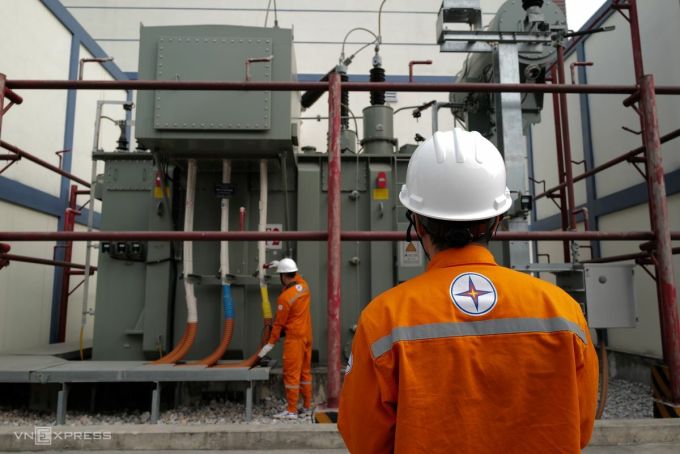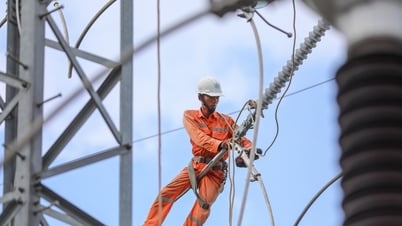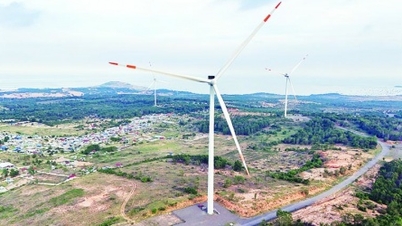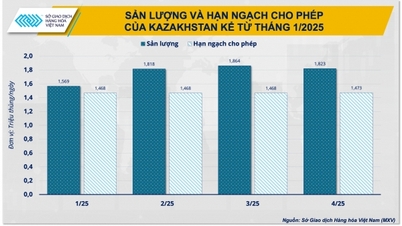The Ministry of Industry and Trade assigned EVN to study two-component electricity prices based on capacity and electricity consumption.
Vietnam is applying a single-component electricity price, which means paying according to electricity consumption. In a document recently sent to the Vietnam Electricity Group (EVN), the Ministry of Industry and Trade requested that the group study the mechanism and roadmap for the subject to apply two-component prices, including capacity price and electricity consumption.
EVN was also assigned to assess the impact on electricity customer groups in the case of Vietnam piloting this electricity price. "This needs to be calculated and compared with the current applied price mechanism, which is the step-by-step price for household electricity users and according to voltage level for production and business," the Ministry of Industry and Trade noted.
Based on EVN's research and proposals on the mechanism, roadmap and subjects of application of two-component electricity prices, the Ministry of Industry and Trade will consider and submit to the Prime Minister for decision.
In fact, electricity prices based on capacity and electricity consumption are applied by many countries to production and business customers. Because, the price of one component, which is calculated based on electricity consumption, only covers variable costs such as fuel and materials purchases. The price of two components, in addition to the price based on electricity consumption, will supplement the price based on capacity. This is the amount that will cover fixed costs (depreciation, labor, repair, etc.) of the power plant.
For example, in China, coal-fired power plants have adopted a two-component electricity price since the beginning of this year. The price of coal-fired power capacity is determined based on the fixed costs of the plants, with a maximum of 330 yuan per kilowatt-hour per year.
However, most localities in the country charge a power price of 100-165 yuan per kilowatt-hour per year, depending on the proportion of renewable energy and coal-fired power demand.
Electricity costs for coal-fired power plants are included in the operating costs of the system. Industrial and commercial customers will have to pay the capacity costs paid by the plants due to high electricity usage and allocated according to the monthly electricity consumption rate.

Hanoi Electricity workers work at the Lang Ha transformer station (Dong Da District, Hanoi), December 2022. Photo: Ngoc Thanh
Mr. Ha Dang Son, Director of the Center for Energy and Green Growth, commented that the principle of reflecting supply costs and less cross-subsidy is implemented in many countries and they have used a two-component electricity price structure. However, Vietnam is still applying a single-component electricity price for consumed electricity, and as long as this problem still exists, the shortcomings in the current electricity price structure will not be resolved.
According to him, the electricity price mechanism in Vietnam will be clearer if the price is applied according to capacity and electricity consumption. For example, a 1,200 MW plant will have to pay a certain amount of power for each MW, so that the plant can cover fixed costs. Households that use a lot of electricity, such as production, will have to pay part of this capacity price. Household and civil electricity users will only have to pay a very small part or none, so the cross-subsidy between the cost of living and production will be reduced as it has been for a long time. "This requires a complete reform of the current electricity price list in Vietnam," he told VnExpress .
Applying a two-component electricity price has also been suggested by energy experts to the Ministry of Industry and Trade many times when this agency improved the electricity price list. Associate Professor Dr. Bui Xuan Hoi, Principal of the Northern Electricity College, said that this is a way to overcome the shortcomings in the price list structure and avoid the situation of "high electricity bills in the hot season".
For example, two households use the same 24 kWh in different ways during the day. A household that uses 24 kW of electricity in one hour will be charged a different price than a household that uses 24 kW in 24 hours. If electricity is charged on a component basis (ie by the amount of electricity used), these two households will pay the same bill, but the costs they cause to the electricity system will be different.
At the Government press conference in December 2023, a representative of the Ministry of Industry and Trade said that this is a new mechanism that needs to be carefully researched and tested to avoid major impacts on electricity customer groups.
Last year, the average electricity price increased twice, a total of 7.5%. After adjustment in early November 2023, according to the decision of the Ministry of Industry and Trade, the household electricity price is divided into 6 levels, the highest is 2,492 VND per kWh (when using more than 401 kWh), excluding VAT.
Meanwhile, the electricity price for production and business is divided by voltage level and normal - low - peak hours. The lowest price for production is 1,044 VND/kWh (off-peak hours) and the highest is 3,314 VND/kWh (peak hours). Similarly, the electricity price for business is 1,465 - 4,937 VND/kWh, corresponding to low - peak hours with voltage levels of 22kV and under 6kV. The prices do not include VAT.
Source link



![[Photo] Vietnamese and Hungarian leaders attend the opening of the exhibition by photographer Bozoky Dezso](https://vphoto.vietnam.vn/thumb/1200x675/vietnam/resource/IMAGE/2025/5/29/94d8ceca5db14af3bf31285551ae4bb3)

![[Photo] Prime Minister Pham Minh Chinh meets with Hungarian President Sulyok Tamas](https://vphoto.vietnam.vn/thumb/1200x675/vietnam/resource/IMAGE/2025/5/29/dbcaa73e92ea4448a03fe1d0de6d68e8)


































![[Photo] Prime Minister Pham Minh Chinh receives a bipartisan delegation of US House of Representatives](https://vphoto.vietnam.vn/thumb/1200x675/vietnam/resource/IMAGE/2025/5/28/468e61546b664d3f98dc75f6a3c2c880)





























































Comment (0)